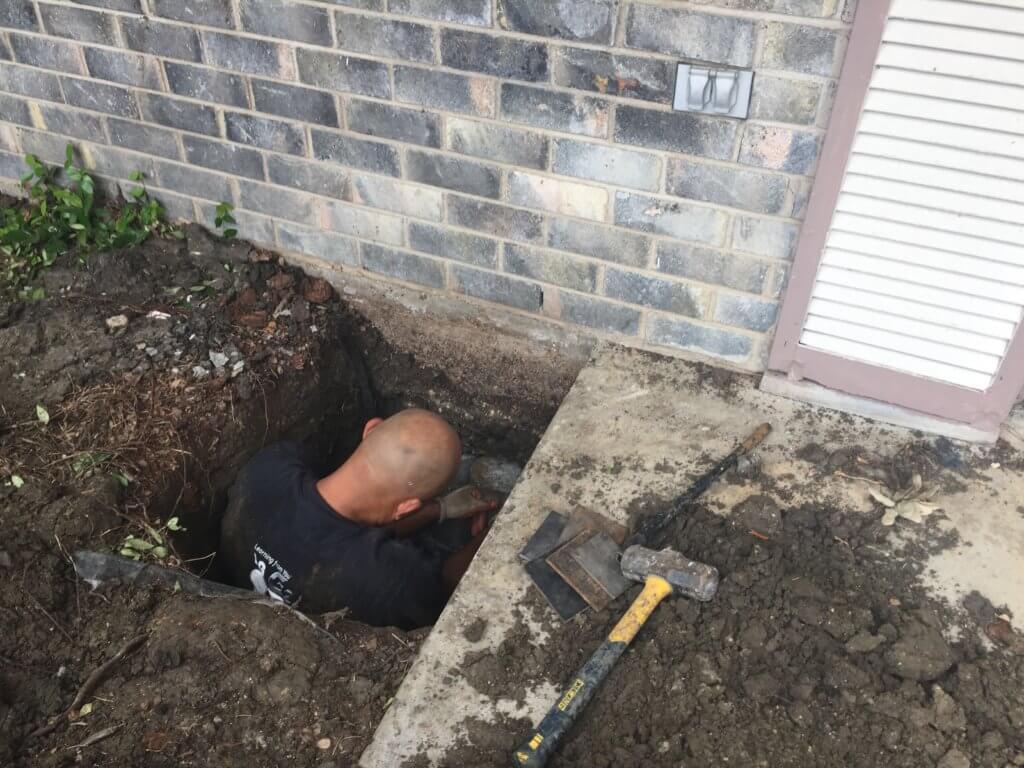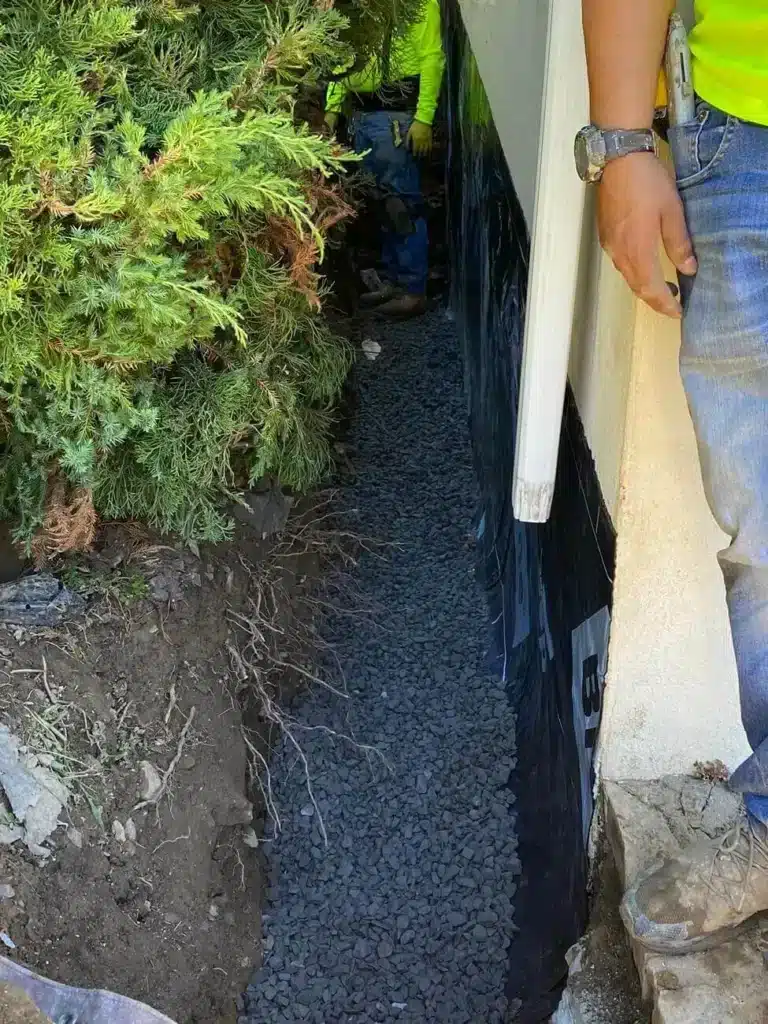The Ultimate Solutions for Foundation Repair Oklahoma City: Specialist Insights
Wiki Article
Exploring Various Methods of Structure Repair Work for Different Soil Kinds
Structure repair service is a vital facet of maintaining structural integrity, especially when thinking about the varied challenges postured by various dirt kinds. The complexity of dirt habits under differing problems demands a customized technique to fix, making certain optimal services such as helical piers for unpredictable soils or chemical grouts for cohesive layers.Comprehending Soil Kinds
Soil types play an important duty in the stability and durability of building structures, making it important for homeowners and building professionals to comprehend their attributes and behavior. The interaction in between soil and structure can identify the structural integrity of a building. There are numerous dirt types, each with distinctive physical properties that impact just how structures are created and maintained.Granular dirts, such as sand and crushed rock, supply excellent drain and are commonly thought about steady. In comparison, natural soils like clays and silts display different actions.
Rocky dirts, recognized for their toughness and security, offer exceptional assistance for foundations but may require specific tools for excavation. Conversely, loamy dirts, which are a balanced combination of silt, sand, and clay, commonly supply desirable problems for foundation assistance because of their modest drainage properties.

Comprehending these soil types is important for picking proper foundation repair service approaches, making sure the resilience and security of structures over time.
Challenges With Extensive Clay
Amongst the numerous soil types, expansive clay provides special challenges for structure security as a result of its propensity to undertake considerable quantity changes with wetness variation. This kind of dirt swells when wet and contracts when dry, which can exert substantial stress on frameworks. These changes can result in foundation splitting, heaving, and settlement problems, presenting substantial dangers to the architectural stability of structures.The obstacles with extensive clay are intensified by its plasticity index, which measures the dirt's ability to transform form and volume. A high plasticity index shows better capacity for activity, boosting the chance of damages to foundations. This is particularly bothersome in areas experiencing extreme or constant weather changes, where cycles of damp and completely dry problems are usual.
Moreover, the deepness of expansive clay layers can vary, making complex the analysis and preparation of appropriate foundation repair work approaches. These intricacies need a detailed geotechnical evaluation to guarantee reliable structure repair work strategies are executed, highlighting the importance of resolving expansive clay obstacles with experience and care.
Solutions for Sandy Soils
Sandy soils, characterized by their huge particle size and reduced communication, existing distinctive difficulties for structure stability due to their tendency for moving and erosion. By anchoring the foundation to much deeper, much more secure soil layers, these systems can offer the essential assistance to neutralize the moving nature of sandy soils.One more recommended technique is the application of dirt stabilization techniques. Chemical grouting, as an example, entails infusing a stabilizing representative right into the dirt, which enhances communication and minimizes leaks in the structure. This process aids to strengthen the sandy substrate, therefore lessening the risk of erosion and movement.
Additionally, setting up correct water drainage systems is crucial in sandy dirt problems. Making certain sufficient drainage can prevent water buildup around the foundation, which commonly aggravates erosion and dirt displacement. Techniques such as French drains or surface grading can be utilized to route water far from the building perimeter.
Attending To Working Out in Loamy Soils
Fertile dirts, known for their balanced mix of silt, sand, and clay, use an abundant base for lots of frameworks however can occasionally bring about foundation settling because of their special composition. This balanced appearance offers superb drain and nutrient retention, making it perfect for agriculture and landscaping. This very same feature can become problematic for foundations, as changes in moisture material can trigger the dirt to broaden or agreement, leading to resolving.Precise dirt screening is important to identify the certain make-up and wetness material of the loam. As soon as data is gathered, implementing appropriate drainage services is essential to preserve constant moisture degrees, thereby reducing the risk of soil tightening or development.

Ingenious Fixing Methods
In the world of foundation repair, cutting-edge strategies are news constantly being developed to resolve the complex challenges postured by numerous dirt problems. As soil types vary dramatically in their structural residential or commercial properties, conventional techniques may not constantly are enough. The advent of new modern technologies in structure repair service provides more tailored services, ensuring security and durability.One remarkable development is using helical piers, which are particularly reliable in expansive or unpredictable soils (foundation repair okc). These piers are screwed right into the ground till they reach a steady layer of soil, supplying solid support for the structure above. This approach decreases disruption and is versatile to different soil kinds, making it a check here versatile service
One more cutting-edge method is the application of polyurethane foam injection. This method entails injecting high-density polyurethane foam beneath the foundation to fill up spaces and stabilize the structure. It is a much less intrusive option to typical support, using quick setup with minimal disturbance to the surrounding area.
In addition, soil stablizing techniques, such as making use of chemical cements, have obtained grip. These compounds boost dirt stamina and lower leaks in the structure, stopping future shifting. Jointly, these innovative repair work methods offer reliable remedies for the varied difficulties positioned by varying soil conditions.
Verdict

Structure repair work is an essential facet of maintaining structural honesty, especially when thinking about the varied obstacles posed by different dirt kinds (foundation repair okc). The complexity of dirt actions under differing conditions requires a tailored technique to repair, making sure optimum options such as helical piers for unpredictable dirts or chemical grouts for cohesive layers. By securing the structure to much deeper, much more stable soil layers, these systems can offer the necessary support to neutralize the changing nature of sandy dirts
Foundation fixing calls for mindful factor to consider of soil types to make sure stability and longevity. Chemical grouts improve soil stamina and minimize leaks in the structure in natural dirts.
Report this wiki page